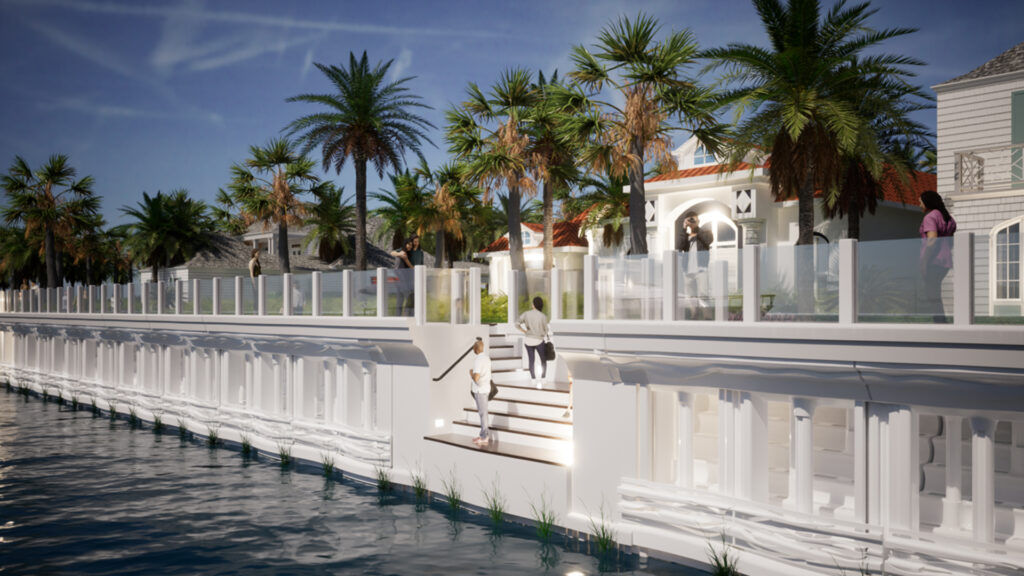By Bella Kubach, The Invading Sea
By 2050, the National Oceanic and Atmospheric Administration predicts that sea levels will rise by 10-12 inches, putting thousands of coastal properties at risk of flooding and water damage.
The heavy, concrete seawall designs that many coastal cities use have been largely unaltered for years, not accounting for the acceleration in global warming and increasingly rising waters.
However, Pepsy Kettavong, founder and CEO of Fort Lauderdale-based Smart Seawall Technologies, has manufactured a new seawall design that diverts waves and provides marine life with aquatic habitats while protecting coastal homes.
“I realized the approach was instead of going against nature, why not use nature to our advantage?” Kettavong said.
Smart Seawall Technologies’ seawall design diverts incoming waves and absorbs the wave energy.
“It’s kind of like a Tai Chi approach,” Kettavong said. Because of the curvature of the design, the seawall deflects incoming waves, ultimately using the “opponent’s” energy toward itself like in the Chinese martial art.

Smart Seawall Technologies has an interlocking modular system, meaning additional walls can be added to as levels rise. The interlocking design allows for the growth of seagrass beds and oyster reefs.
Once its system is installed, “We use this fiberglass-reinforced rebar, which means it doesn’t rust,” Kettavong said. “We fill this whole encapsulation form with concrete.”
Since the rebar won’t rust, it can last longer. According to Kettavong, the system could last 75 to 100 years. Traditional concrete seawalls typically last about 20 to 50 years.
Smart Seawall Technologies offers two different designs: the Aquatic Series and the Wave Diversion Series. The Aquatic Series is designed for calmer areas of water such as bays and canals, while the Wave Diversion Series is more suitable for areas with the tendency of rougher waters and larger waves.
“I think the importance of finding multiple solutions and different seawall designs is based on the different needs of the environment and so that we’re not just creating one,” said Katherine O’Fallon, executive director of the Marine Research Hub. “There’s not a one size fits all.”

Smart Seawall Technologies has a partnership with the Marine Research Hub, a Fort Lauderdale-based non-profit organization that helps startups turn research into marketable products that build Florida’s “blue economy.”
By creating different designs structured for different environments, O’Fallon sees a greater opportunity for sustainability and longevity. In coming years, she said, the demand for seawall options will continue to grow as sea levels rise and flooding is a greater risk.
“The goal is to have more options so that the cost is also going to be in line with what is going to work for a homeowner or for a business,” O’Fallon said.
Even with the added environmental benefits and increased lifespan of Kettavong’s design, he said that his product is not any less affordable than traditional models.
“Believe it or not, it’s the same price” Kettavong said.
The first generation of his technology has already been used for a project in Lake Ontario in 2019, where “the response was just overwhelmed,” according to Kettavong.
Now, the company plans to mainly focus on projects in Florida. Kettavong said their goal is to complete three scheduled projects by the end of the year.
Bella Kubach is a graduating Florida Atlantic University senior majoring in multimedia journalism who has reported for The Invading Sea during the spring 2024 semester.
Sign up for The Invading Sea newsletter by visiting here. If you are interested in submitting an opinion piece to The Invading Sea, email Editor Nathan Crabbe at ncrabbe@fau.edu.



